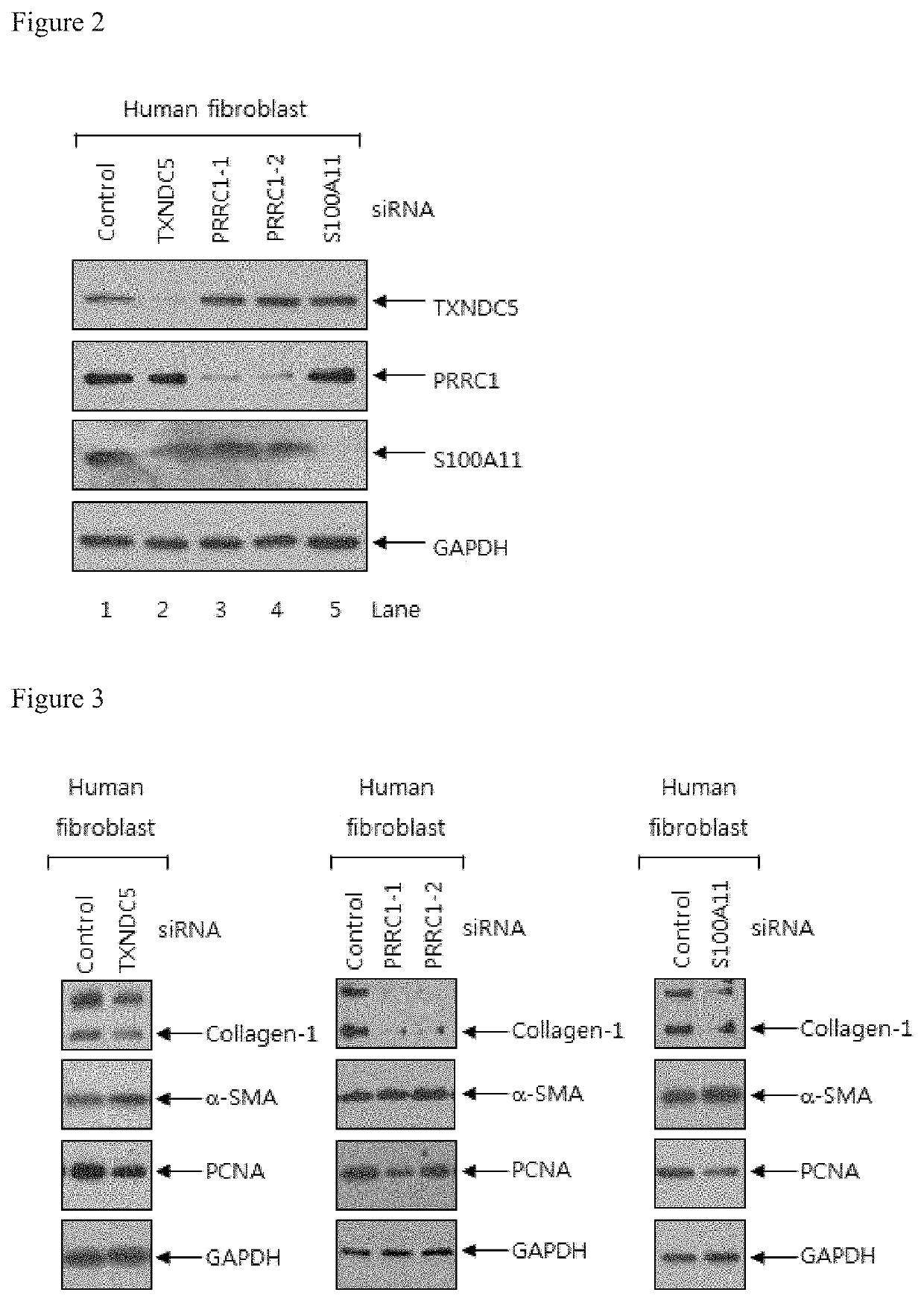Composition for preventing or treating keloids or hypertrophic scars
a technology for hypertrophic scars and keloids, applied in the field of compositions for preventing or treating keloids or hypertrophic scars, can solve the problems of hypertrophic scars or keloids, hypertrophic scars or keloids, and limited methods, and achieve accurate diagnosis of hypertrophic scars, inhibiting the expression and activity of proteins, and preventing or treating hypertrophic scars.
- Summary
- Abstract
- Description
- Claims
- Application Information
AI Technical Summary
Benefits of technology
Problems solved by technology
Method used
Image
Examples
Embodiment Construction
[0043]Preparation of Human Skin Fibroblasts, Normal Tissues, and Hypertrophic Scar Tissues
[0044]Skin tissues used in this experiment were obtained from a total of three patients, and an immunohistochemical (IHC) experiment was conducted using male and female normal tissues and scar tissues. Then, an effect of siRNA transformation was observed using primary fibroblast cells derived from each of the tissues.
[0045]A tissue was washed with 70% ethanol, and fats were removed by trimming. Then, the tissue was chopped to separate a tissue for the MC experiment. The remaining tissue was further trimmed, and then chopped. A mixed solution including collagenase, trypsin, and EDTA was added to the tissue, and the cells were isolated by centrifugation at 37° C. and 100 rpm. The isolated cells were cultured in an F12 medium supplanted with 10% fetal bovine serum (FBS) and gentamycin.
[0046]Comparison of Expression of Candidate Proteins Via Immunohistochemical (IHC) Experiment on Hypertrophic Scar...
PUM
| Property | Measurement | Unit |
|---|---|---|
| temperature | aaaaa | aaaaa |
| tension | aaaaa | aaaaa |
| Northern blotting | aaaaa | aaaaa |
Abstract
Description
Claims
Application Information
 Login to View More
Login to View More - R&D
- Intellectual Property
- Life Sciences
- Materials
- Tech Scout
- Unparalleled Data Quality
- Higher Quality Content
- 60% Fewer Hallucinations
Browse by: Latest US Patents, China's latest patents, Technical Efficacy Thesaurus, Application Domain, Technology Topic, Popular Technical Reports.
© 2025 PatSnap. All rights reserved.Legal|Privacy policy|Modern Slavery Act Transparency Statement|Sitemap|About US| Contact US: help@patsnap.com


